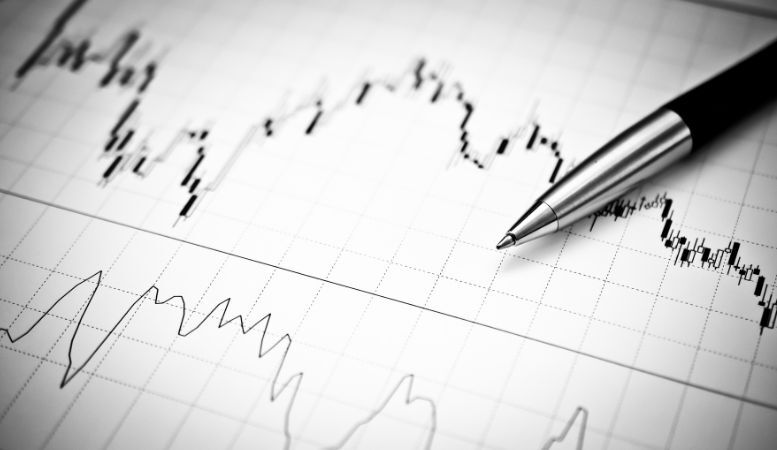Table of Contents
If you’re interested in precious metal investing, you may have heard of the gold-to-silver ratio. If not, you’ve likely at least noticed that gold prices are significantly higher than silver, despite them each being valuable metals in high demand from the jewelry industry, investors, industrial applications, and more. So, why is the gold-to-silver ratio so high?
Understanding the gap in pricing between gold and silver is critical in shaping your investment portfolio. Once you learn to analyze these trends, you can hop on the right precious metals for your financial goals based on the market’s current pricing.
Read on to learn how the gold-to-silver ratio works and how to use this concept to your advantage when investing. Consult your financial advisor if you need portfolio support.
Understanding the Concept
The gold-to-silver ratio is a simple figure that displays how many ounces of silver you need to buy to get one ounce of gold. The ratio can fluctuate drastically despite how each metal responds to similar market factors. Sometimes, the gold-to-silver ratio may be on the lower end of 50:1 when gold prices dip or reach 80:1 when silver prices plummet.
You can calculate the gold-to-silver ratio by dividing the price of gold by the price of silver. As of this writing, the gold-to-silver ratio for the past month has averaged just under 85:1.
The gold-to-silver ratio essentially acts as a trading ratio. The purpose of the concept is to use the gap to understand when you should buy or sell either precious metal based on their relation in pricing to one another.
A low ratio means gold prices are low compared to silver, while a high ratio means silver prices are lower than gold. Investors may choose to buy gold while prices are low or sell their commodities when the ratio is extraordinarily high, pushing the 100:1 range.
Historical Fluctuations

The gold-to-silver ratio has always fluctuated as each commodity varied in price, though it varies more now than it used to. For centuries, people around the globe used gold and silver for trade, minting coins directly. The ratio remained far more stable during gold standard periods as nations used gold and silver-backed currencies and, as such, needed to maintain assigned limits on currency values.
Global cultures have long seen gold and silver as valuable commodities because of their limited supply. According to the U.S. Geological Survey, the Earth’s crust contains 17.5 times more silver than gold, explaining the wide gap in pricing.
Why is the gold-to-silver ratio so high? As the amount of gold continues to dwindle, the ratio steadily grows. By the 20th century, the ratio began fluctuating more because of fewer standard regulations following the end of the precious metals currency era.
Pre-1900 Averages
In 1693, the Roman Empire officially set the gold-to-silver ratio at 12:1, setting a precedent for numerous nations to follow this standard for centuries.
In 1792, the U.S. government set the gold-to-silver ratio at 15:1 following the Coinage Act of 1792. The ratio remained at this level until 1833 before rising to 16:1 in 1834.
For silver to reach its pre-1900 averages in today’s terms, it would need to skyrocket to over $100 an ounce. Today, the precious metal’s primary target is pushing $25 per ounce, so such a gain would be monumental.
20th-Century Trends
By 1939, President Franklin D. Roosevelt raised the ratio to 35:1. At the start of World War II in 1940, the ratio spiked to 100:1, reaching a level it would only hit a few times in history. Just a few years later, in 1944, the ratio went back to 15:1.
By 1979, the ratio began a steady upward trajectory from its bottom point of 15:1 to another top point of 100:1 in 1991 at the start of the Gulf War. Over the last few decades, prices have continued to fluctuate greatly depending on geopolitical tensions, demand rates, inflation levels, and other key factors. By 2011, the ratio plummeted back to 38:1 during the Great Recession before climbing back to the all-time record high in 2020 during the global COVID-19 pandemic, when the ratio hit 125:1.
On average, the gold-to-silver ratio during recent years fluctuates between 50:1 to 80:1, with spikes in either direction depending on the current investment climate. Gold prices are performing exceptionally well when the ratio hits the upper 90s or 100:1 level. During 2020, when the ratio hit its high point, gold prices gained around 25%, providing exceptional returns for investors holding the precious metal.
Interpreting the Ratio

Investing in any asset requires ample market knowledge and strategizing. By using all the tools and information at your disposal, you can make educated portfolio decisions that align with your financial goals. The gold-to-silver ratio allows you to further interpret current market conditions based on historical performance rates.
So, why is the gold-to-silver ratio so high right now? Let’s look at a few reasons gold prices have outperformed silver in recent months:
- Economic uncertainty: Gold is a safe-haven asset that performs best during periods of economic turmoil, hence why the ratio was so high during various wars and the COVID-19 pandemic. Right now, the United States and the greater global economy are experiencing extreme inflation rates and uncertainty, leading investors into safe-haven buying to protect their assets from failing currencies.
- Equity market instability: When other asset classes fail, investors turn to more stable options. With economic weakness, the equity market experiences more volatility.
- U.S. dollar weakness: Gold has an inverse relationship with the U.S. dollar, meaning when the dollar’s value decreases, gold performs well. With inflation running high right now, gold can perform well, increasing the ratio.
- Inflation hedging: Investors use gold to hedge against inflation because it is one of only a few assets that can maintain its value while all others fail. As inflation rates run rampant, gold enjoys excellent gains.
- Rising geopolitical tensions: Rising tensions in the Middle East have increased safe-haven buying as investors want to secure their assets if the worst-case scenario occurs. At the same time, nations like China are stockpiling gold to devalue the U.S. dollar further, only adding to gold’s rise.
- Central bank demand: In 2022, central banks around the world purchased gold at a record-high rate and haven’t stopped since. Central bank gold demand typically doesn’t account for much of the precious metal’s pricing, though in recent months, the sector has provided critical performance support.
- Supply levels: The planet has a limited, finite supply of gold, with much of it already mined and circulating. If you were to place all of the globe’s gold in one cube, it would only measure 72 feet per side. In comparison to the amount of silver, gold offers higher rarity, hence the climbing price ratio.
Keeping the above factors in mind, the gold ratio still isn’t as high as it could be given the current interest rates. Interest rates in recent months reached their highest levels in the last 50 years in the United States as the Federal Reserve attempted to combat inflation.
Gold has an inverse relationship with interest rates because high borrowing levels reduce the opportunity costs of investing in non-yielding assets like gold. When interest rates begin settling, the gold-to-silver ratio may increase even more. Prior to the beginning of the latest interest rate hiking cycle, gold reached its record-high price point of well over $2,000 per ounce.
Investment Strategies
Investors use the gold-to-silver ratio to shape their portfolio strategies in numerous ways. To start, some choose to purchase gold when the ratio is low because it implies cheap gold prices, offering an opportune time to strike. A low ratio could also be the right time to sell silver if silver prices are the culprit for closing the gap.
Many traders also use the ratio to determine when they should buy silver. When the ratio is high, silver prices may be lower, offering a cheaper buy-in. A high ratio also means capping gold prices, offering possible insight into when gold investors should consider selling their assets.
Predictions and Speculations

Many predictions surround the gold-to-silver ratio. Some analysts think the pre-1900 levels of 16:1 could return given silver’s critical value in numerous industrial applications, though for this to happen, the precious metal would need to essentially quadruple in price without gold budging.
Another major speculation that would affect the ratio significantly is the de-dollarization trend. De-dollarization is the move away from the U.S. dollar as the universal currency toward something more stable and finite, like gold.
Central banks around the globe have been stockpiling gold for some time in an effort to move away from the U.S. dollar while preparing for the movement toward gold. Whether or not this shift could actually occur is highly unclear.
If gold became the universal currency, not only would its prices likely skyrocket, but we would potentially see more stable performance rates similar to the pre-1900 levels when nations used gold- and silver-backed currencies. A gold-backed currency would be more regulated and less volatile, though the ratio could still be extraordinarily high.
Risk Factors
The gold-to-silver ratio can continue fluctuating at any point in response to numerous risk factors. Understanding the risks at play can help you make informed investment decisions. The main risks impacting the precious metals market include the following:
- Market demand rates
- Interest rates
- Inflation levels
- Geopolitical tensions
- Mining production rates
- Central bank demand
- Economy and market stability
Long-Term Investment Approach
Gold and silver typically perform best when held in the long term since precious metals store their value over time. Because of this, many traders often choose to hold on to their gold or silver for numerous decades to reap the highest returns possible.
Now that you know the answer to “Why is the gold-to-silver ratio so high?” you can shape your investment strategy. At Oxford Gold Group, we offer precious metals IRAs for convenient, long-term investments, plus a range of bullion you can purchase directly. Shop our gold and silver online today or contact Oxford Gold Group at (833) 600-GOLD to learn more about our precious metals IRAs.








